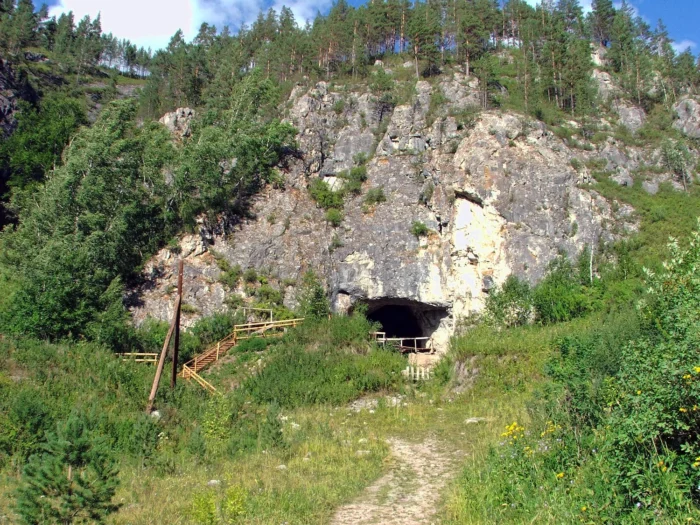When archaeologists recovered a human finger bone fragment from southern Russia’s Denisova Cave 16 years ago, they soon learned they were onto something.
A then-unknown type of hominin DNA emerged during later genetic testing. When the team published its research in March 2010, they announced the fragment came from an ancestor who also shared DNA with Neanderthals and us — from a common ancestor about a million years old.

Denisova Cave, Russia. Photo: World History Encyclopedia
In the distant past, this new hominin, called the Denisovans, seemed to have become separated from Neanderthals through geography. Neanderthals flourished in the West while Denisovans found a home in Eurasia.
Even these crumbs of knowledge about this elusive early ancestor are remarkable, considering how rare Denisovan fossils are. But that hasn’t stopped a new research team from synthesizing a decade of work into a study showing that modern humans carry more Denisovan traits than previously thought.
Just 10 fragments
Denisovan fossils include just 10 examples of teeth, skull fragments, and other small particles dating to about 200,000 years ago. Much of our current understanding comes from DNA extracted from the remains of a single pinky finger. Yet that’s enough to indicate, per the Max-Planck-Institute for Evolutionary Anthropology, that these obscure human ancestors were a lot closer to us than some of their more famous cousins, like Neanderthals.
The evidence describes a human lineage able to survive wildly differing climates across thousands of kilometers, from lowland Siberia to high-altitude Tibet to Laotian woodlands and possibly even rainforests in New Guinea and the Philippines. Billions of people on Earth still carry their DNA, as a result of interbreeding.
“What we have found out about Denisovans is that, from a behavioral perspective, they were much more like modern humans,” Laura Shackelford, a paleoanthropologist at the University of Illinois, told The New York Times.
That doesn’t mean, exactly, that they sat around consuming entertainment and developing marketplaces. Instead, the team found, the Denisovans proliferated regardless of climatic and other circumstances.
Adaptability
Tracing their genetic profile across the continents, the team found an impressive flexibility, which could have contributed to their longevity. New Guineans could have directly inherited Denisovan DNA via interbreeding only 25,000 years ago. Its genetic advantages show up periodically. In Tibet, for instance, a Denisovan gene assists in high-altitude adaptation. And their brains might have adapted best of all, by lowering energy requirements for that organ when food was scarce.
In the increasingly complex mystery of human evolution, the Denisovans remain a puzzle, but one whose pieces are slowly falling into place.






